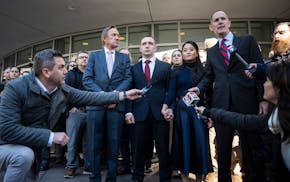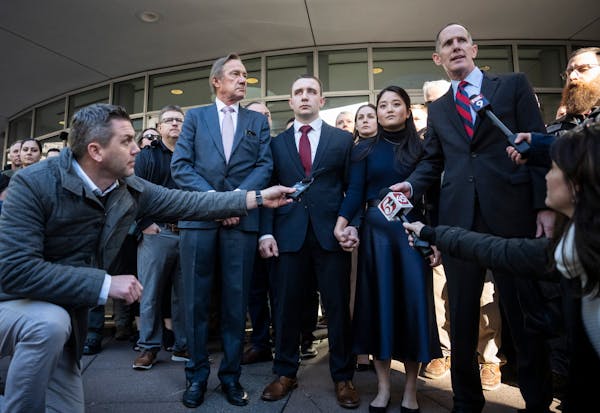To help build speedy Internet service, the state created a new, $20 million grant fund. This fall, dozens of counties, companies and cooperatives applied — seeking $44.2 million.
"As we suspected, the demand is great," said Katie Clark Sieben, commissioner of the Minnesota Department of Employment and Economic Development, or DEED.
The money, approved by lawmakers this year, is meant to bring broadband to areas that have slow or no service. About 22 percent of Minnesota households still lack access to high-speed Internet, not counting mobile service, according to new numbers from Connect Minnesota, a nonprofit that works with DEED to detail broadband coverage.
While $20 million is "a significant amount of state funding," it would cost $900 million to $2 billion to meet that need, Clark Sieben said.
Many of the matching grant requests came from rural Minnesota, where coverage lags. Lake County in northeastern Minnesota is seeking $5 million. Halstad Telephone Company in northwestern Minnesota wants $1.65 million. The Leech Lake Band of Ojibwe applied for $136,000.
The projects "represent a wonderful range of both applicant type and proposal type," Clark Sieben said. "And they also cover every region in the state, as well."
Many applicants are governments. The city of Annandale, for example, has been critical of the coverage offered by Windstream Communications and has considered creating its own network. The city applied for $2.4 million, although the details of its proposal are not yet public.
Big Internet providers, including CenturyLink, applied as well. Mediacom, a New York-based cable TV and Internet provider, put forward four proposals totaling almost $1.2 million — in Medina, Orono, Maple Plain and Hibbing. If funded, the projects would bring broadband to 600 more homes, said Tom Larsen, Mediacom Communications Corp.'s vice president of legal and public affairs.
State money would offset the great cost of building fiber networks in these areas, some of which sit far from existing networks, which might involve cutting through rock or going under a highway, he said. "These areas would have already been built if there was an economic justification to build them," Larsen said. "With a matching grant from the state, your costs come down."
While Mediacom fought Lake County's use of federal funds to build its own network, the company doesn't have an issue with public funding for areas that are unserved, Larsen added.
Broadband is "up and running" in Silver Bay and Two Harbors, said Lake County administrator Matthew Huddleston. The cold has slowed fiber construction but the project will be complete by September 2015, he said.
About 40 miles north of Two Harbors, Ron Brodigan is being patient, he said, "because there is nothing else we can do."
Brodigan, owner of the Snowshoe Country Lodge on Sand Lake, gets Internet service with download speeds of 5 megabits per second — "almost adequate," he said. Once the county's fiber-to-the-premises project reaches him, he expects to pay $80 a month for 30-megabit service.
"It's going to be a boon when we get it," he said. "But it's been setback after setback," he said, referring to challenges from cable companies and other delays. But, he added, "they're really humping now."
Huddleston declined to describe how the county would use $5 million in grant funding, as the competitive process is ongoing. "We are trying to wait and see this process play out with any contests and any appeals," he said.
The Office of Broadband Development, part of DEED, is reviewing the 40 proposed projects, plus any challenges to them, and will award grants in December.
"Above all, I think what we wanted to do was prove there was interest out there — that there's a need," Sen. Matt Schmit, DFL-Red Wing, told attendees at a broadband conference in Brainerd Nov. 19.
Next, the state must make it easier to apply by grappling with a telecom law that has lagged behind technological advances, said Schmit, who led the push to create the matching grant fund.
Schmit had initially proposed a $100 million fund. This fall, Gov. Mark Dayton's task force on broadband recommended that the state spend $200 million over the next two years on the grants. The Greater Minnesota Partnership supported that goal in its legislative agenda, released Nov. 17.
In a news release, that group's president, Gary Evans, argued that outstate businesses need high-speed broadband, among other things, "in order to close the growing economic gap between the rural and metro parts of the state."
Jenna Ross • 612-673-7168

Prep Athletes of the Week: Slender pitcher heavy on importance
Blaine reveals plans for major new entertainment district near National Sports Center
Jogger on rural southwestern Minnesota road is hit from behind by pickup and killed

